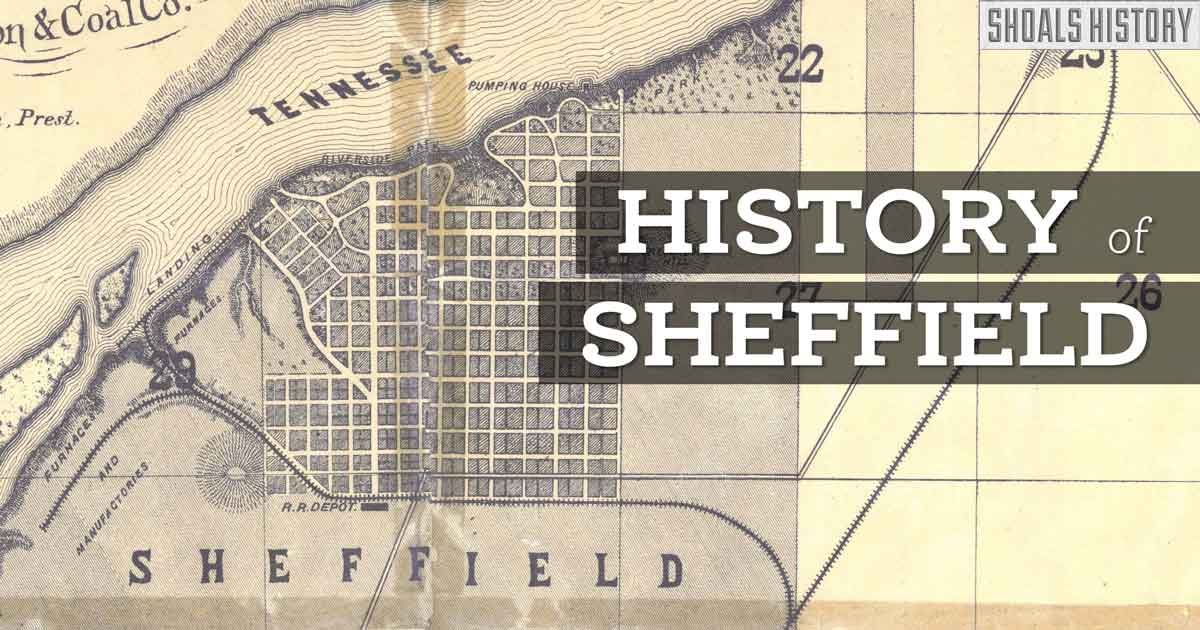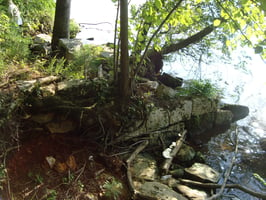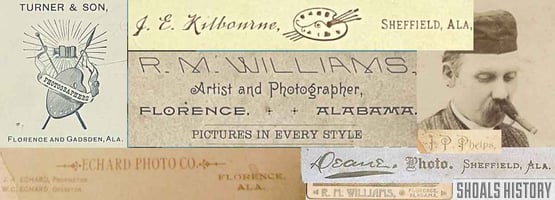Tuscumbia Landing: A Gateway to the West
The History of Sheffield, Alabama

This is a brief summary of the captivating history of Sheffield, Alabama. This city, nestled along the banks of the Tennessee River, boasts a rich tapestry woven by prehistoric inhabitants, Native American tribes, and the trials and triumphs of American history.
The History of Sheffield, Alabama:
From Prehistoric Echoes to Native American Legacies
Sheffield's story stretches back an astonishing 10,000 years. The land whispers tales of prehistoric man who called this place home, leaving behind remnants of their lives in the form of stone artifacts and pottery vessels. Later, vibrant Native American cultures flourished here, enriching the region with their traditions and artistry. Evidence of their presence can still be found in the numerous stone tools and pottery unearthed across the area.
The History of Sheffield, Alabama:
French Traders, Trail of Tears, and the Rise and Fall of York Bluff
The late 18th century saw the arrival of French fur traders, establishing a post near the mouth of Spring Creek. This period also coincided with a thriving Native American village, adding another layer to Sheffield's cultural tapestry. In 1820, a town called York Bluff emerged, with Andrew Jackson, the future president, even acquiring land for a plantation. However, this fledgling town, consisting of a few houses and a store, couldn't sustain itself and eventually faded away.
History took a poignant turn in 1832 with the arrival of the state's first railroad, terminating at Tuscumbia Landing close to Spring Creek. This advancement, however, coincided with a dark chapter in American history – the forced removal of Native Americans. Large bands of Cherokee and Creek people were forced onto the Trail of Tears, departing from this very location.
The History of Sheffield, Alabama:
The Civil War, Industrial Boom, and Sheffield's Rise
The Civil War cast a long shadow over Sheffield. Opposing armies marched through the area, leaving a trail of destruction, with the crucial river bridge being reduced to ashes. However, the embers of war also ignited the spark of a new era. In 1883, Alfred Moses and Walter Gordon envisioned an industrial powerhouse. They acquired a vast tract of land, forming the Sheffield Land, Iron, and Coal Company. Their vision materialized in 1885 with the incorporation of Sheffield, a city named after its English counterpart. Alfred Moses, the architect of this industrial dream, became the city's first mayor.
Sheffield's industrial heart began to beat with the construction of five blast furnaces on Furnace Hill, titans of industry that operated until 1926. The city flourished as a major railroad center, with lines extending in four directions. The Southern Railroad shops provided a wealth of jobs, fueling the city's growth.
The History of Sheffield, Alabama:
Evolving Landscape: Electric Streetcars, Nitrate Plants, and the TVA
The early 20th century saw Sheffield embrace new technologies. Electric streetcars, a marvel of their time, provided convenient transportation between Sheffield, Tuscumbia, and Florence from 1904 to 1933. World War I ushered in another significant transformation. The U.S. Army constructed two massive nitrate plants near the city, crucial for wartime explosives production. This period also saw the groundbreaking for Wilson Dam, a project that would have a lasting impact on the entire region.
President Franklin D. Roosevelt's visits to these facilities in 1933 and 1934 underscored their national significance. Following the war, the mantle of these facilities was passed to the Tennessee Valley Authority (TVA). Under TVA's leadership, the focus shifted towards power generation, fertilizer research, and even munitions production during World War II.
Sheffield, Alabama's journey continues to unfold. As you explore Sheffield, take a moment to appreciate the high river bluffs, the iconic standpipe, the champion walnut trees – and all elements that weave together the unique character of this remarkable city.


